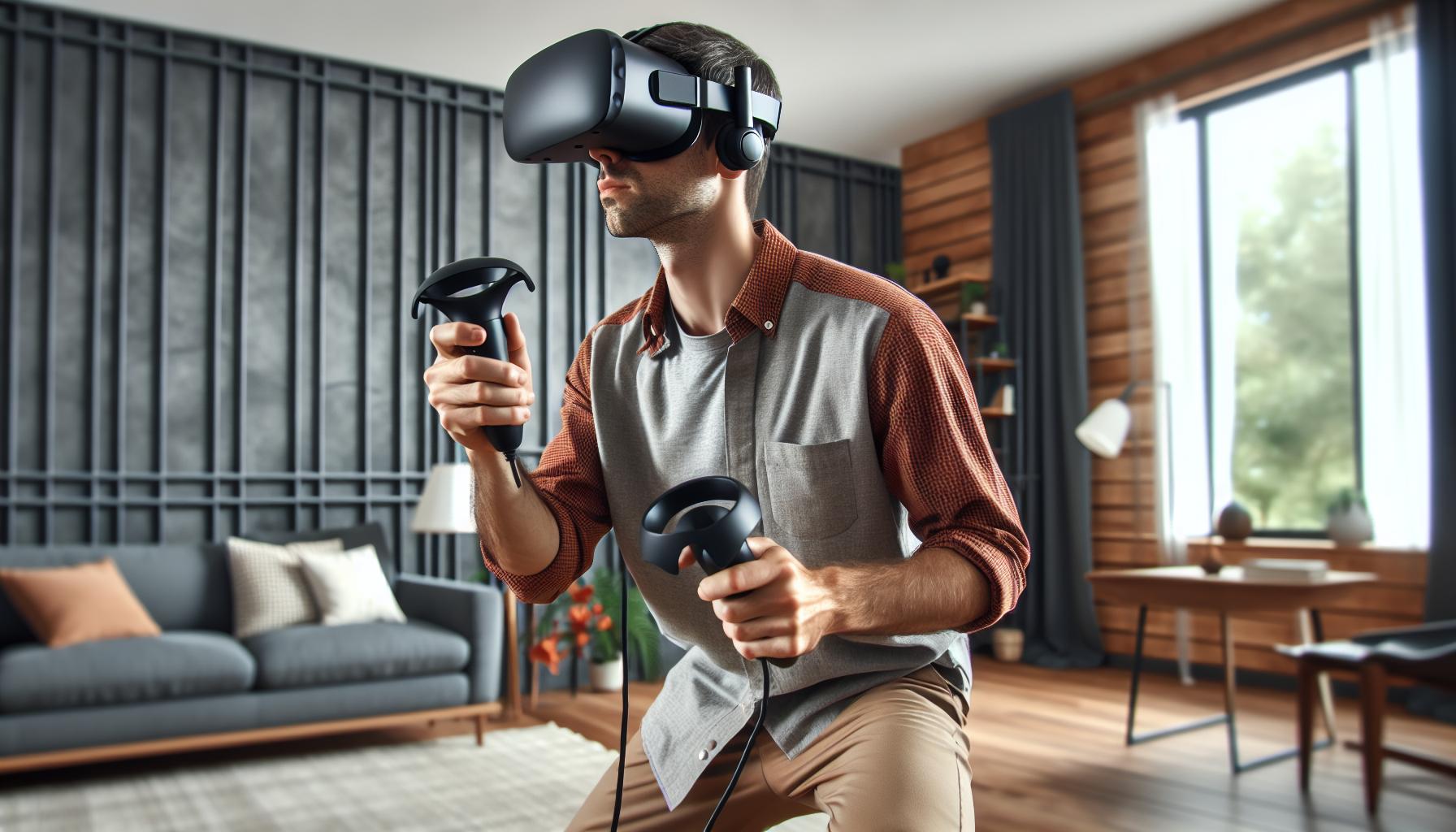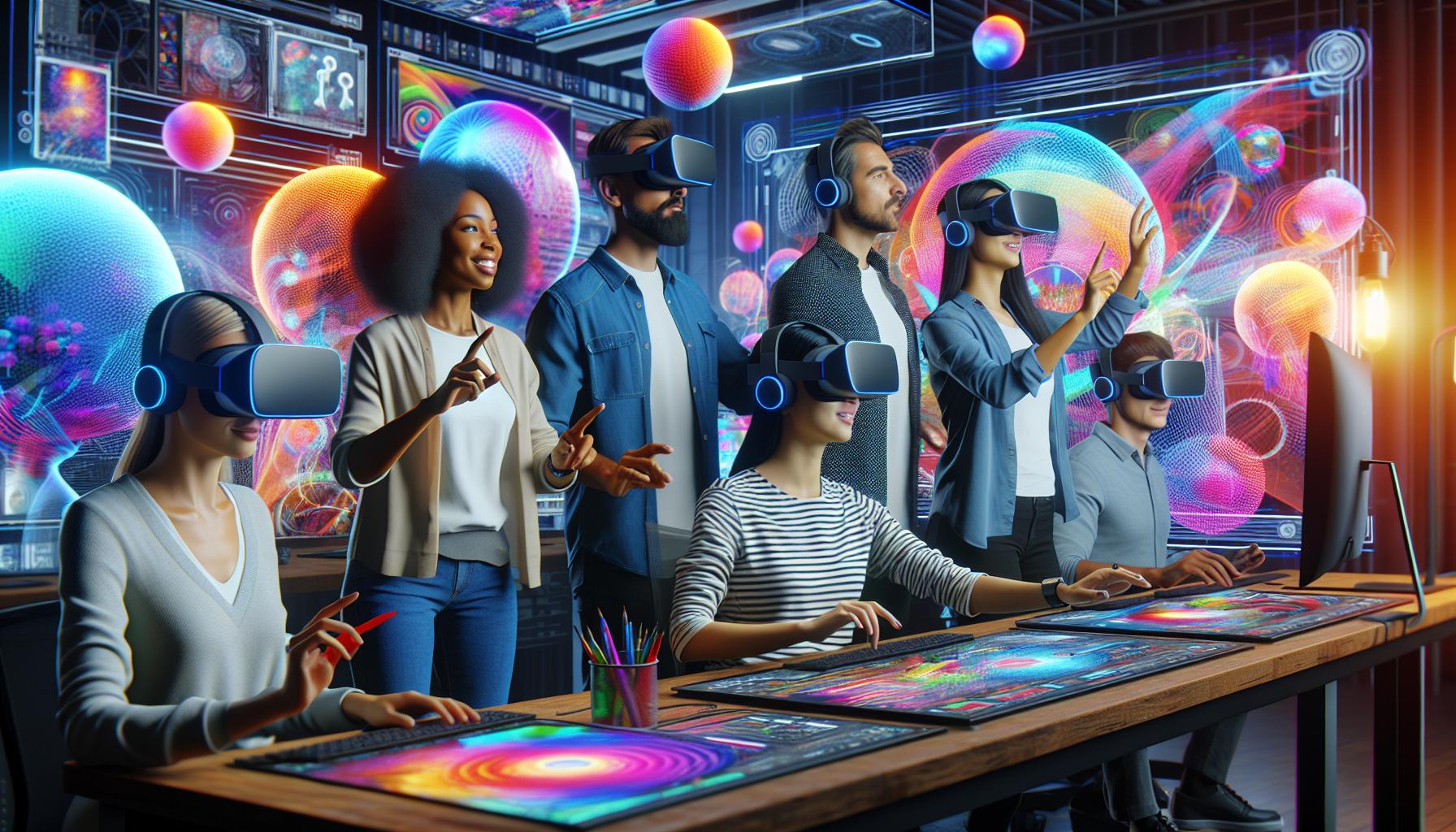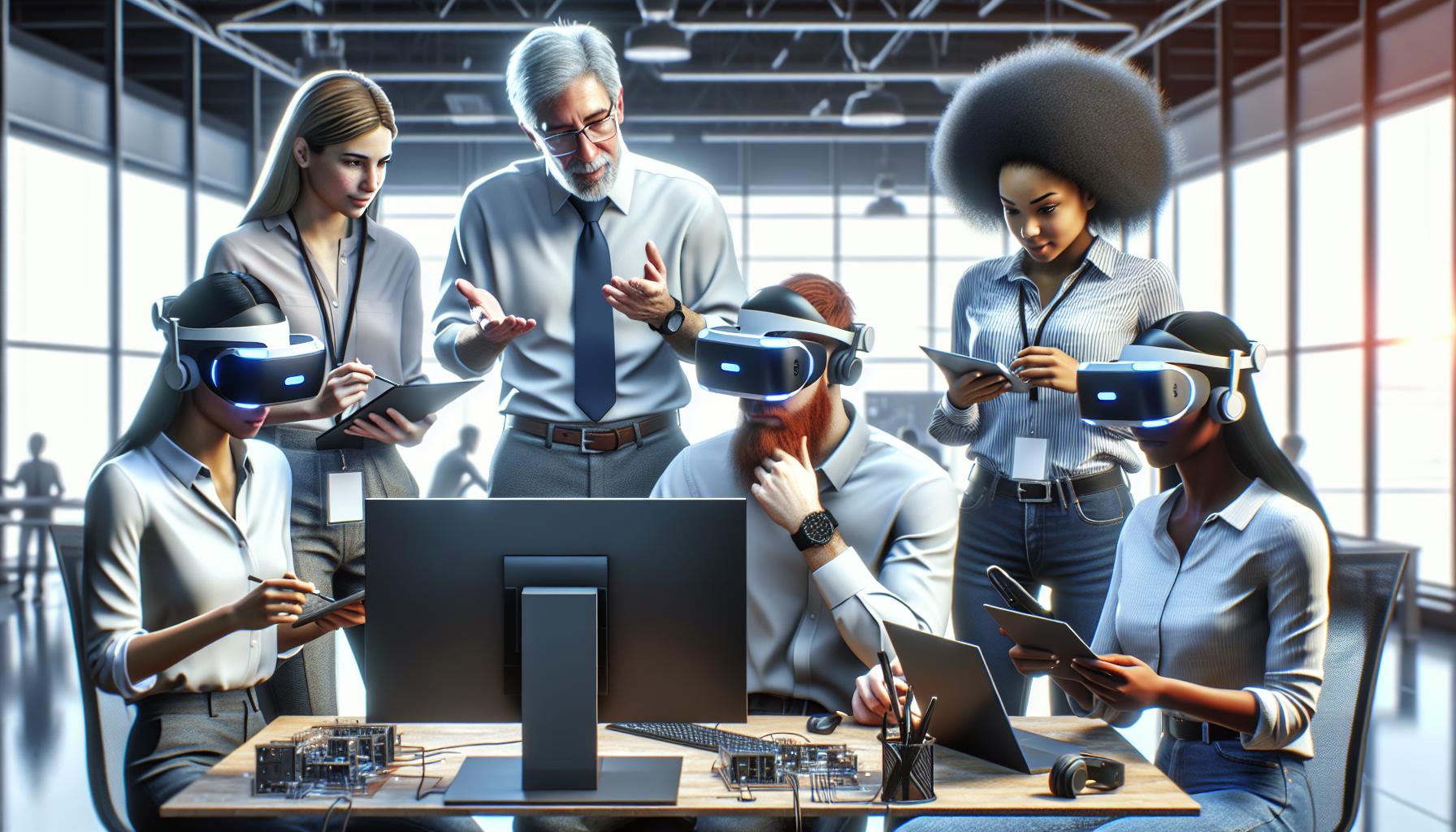Virtual reality isn’t just about strapping on a headset and waving your arms around like a digital wizard. It’s an emerging field that demands a unique blend of skills and characteristics from those who dare to venture into its pixelated realm.
From spatial awareness that would make a cat jealous to the kind of motion tolerance that laughs in the face of seasickness, VR enthusiasts need to possess specific traits to thrive in this digital dimension. Whether they’re developing immersive experiences, conducting virtual training sessions, or simply exploring virtual worlds, these modern-day pioneers require a special set of abilities that go beyond traditional tech skills.
Let’s dive into the essential traits and abilities that separate successful VR adventurers from those who might find themselves stumbling through virtual space like a newborn giraffe on roller skates.
What Skills/Traits Are Required From Someone in Virtual Reality
Technical proficiency forms the foundation of virtual reality development. These skills enable creators to build immersive experiences that engage users effectively.
Programming and Development Knowledge
Virtual reality development relies on programming languages like C#, C++ Python for creating interactive experiences. Unity 3D Engine expertise stands out as a crucial requirement, offering a robust platform for VR application development. Game engine proficiency extends to Unreal Engine, particularly for graphics-intensive VR projects. Software development skills encompass:
- API integration for hardware compatibility
- Version control systems like Git
- Cross-platform development techniques
- Real-time rendering optimization
- Physics engine implementation
3D Modeling and Animation Skills
3D modeling expertise shapes the visual elements of virtual reality environments. Software platforms including Maya, Blender ZBrush enable creators to craft detailed assets characters. The core modeling competencies include:
- Polygon optimization for VR performance
- UV mapping texturing techniques
- Rigging animation fundamentals
- Material shader creation
- Light baking shadow mapping
- Motion capture integration
- Inverse kinematics implementation
- Frame rate optimization
- Real-time animation systems
- Gesture motion design
Physical and Cognitive Abilities

Success in virtual reality environments requires specific physical capabilities and cognitive traits that enable users to navigate and interact effectively in digital spaces.
Strong Spatial Awareness
Spatial awareness forms the cornerstone of effective VR interaction. Users process 3D environments through depth perception, object relationships and distance estimation to maintain orientation in virtual spaces. Advanced spatial reasoning enables accurate manipulation of virtual objects, precise movement through digital environments and seamless interaction with 3D interfaces. This skill proves essential for tasks like architectural visualization, virtual training simulations or 3D modeling in VR.
Motion Control and Balance
Motion control abilities directly impact VR performance and comfort levels. Users demonstrate coordinated hand-eye movements to interact with virtual elements while maintaining physical balance in the real world. Core stability helps prevent motion sickness during extended VR sessions. Fine motor skills enable precise controller manipulation for activities like virtual painting, gaming or medical simulations. Physical stamina supports longer periods of standing VR experiences.
Visual Processing Skills
Quick visual processing enhances VR immersion and functionality. Users track multiple moving objects, process rapid visual changes and interpret complex visual information in real-time. Strong peripheral vision awareness helps monitor the entire field of view in virtual environments. Visual endurance reduces eye strain during extended VR sessions. Pattern recognition abilities enable quick identification of interactive elements, environmental cues and navigational markers in virtual spaces.
Creative and Design Capabilities

Virtual reality development demands a unique blend of artistic vision and technical prowess. These capabilities form the foundation for creating immersive virtual experiences that engage users effectively.
Storytelling and User Experience Design
VR designers craft immersive narratives that transport users into compelling digital worlds. Their expertise includes creating interactive storylines with branching paths based on user decisions. Top storytellers in VR incorporate spatial narratives using environmental cues, sound design elements and interactive objects. The UX design process focuses on intuitive interactions through gesture controls, voice commands and haptic feedback systems. Successful VR experiences integrate:
- Narrative architecture that guides users through virtual spaces
- Interactive elements that respond to natural user behaviors
- Multi-sensory feedback mechanisms for engagement
- Clear visual hierarchies for information presentation
- Emotional touchpoints that create meaningful connections
Problem-Solving Abilities
VR creators tackle complex design challenges through systematic approaches and innovative solutions. They analyze user pain points to optimize comfort levels during extended VR sessions. Problem-solving in VR includes:
- Identifying motion sickness triggers and implementing countermeasures
- Developing scalable solutions for different hardware capabilities
- Creating workarounds for technical limitations
- Optimizing performance while maintaining visual quality
- Addressing spatial design constraints in virtual environments
- User interface accessibility issues
- Load time optimization challenges
- Cross-platform compatibility concerns
- Resource management constraints
- Real-time rendering bottlenecks
Interpersonal and Communication Skills

Effective communication forms the backbone of successful virtual reality development projects. The ability to articulate complex technical concepts in clear terms enhances collaboration across diverse teams involved in VR creation.
Virtual Collaboration Competency
Virtual reality professionals excel in remote collaboration tools like Discord Slack Teams. They demonstrate proficiency in asynchronous communication methods through detailed documentation version control comments team wikis. Team members coordinate tasks across different time zones using project management platforms such as Jira Trello Monday.com. Successful VR developers maintain clear communication channels with 3D artists sound designers UX specialists through virtual whiteboards screen sharing real-time feedback sessions. Their expertise extends to facilitating virtual meetings conducting remote training sessions providing technical support through collaborative VR environments.
Adaptability to New Technologies
VR professionals stay current with emerging technologies platforms hardware specifications. They master new development tools within 2-3 sprint cycles integrate cutting-edge features like eye tracking haptic feedback hand tracking. The rapid evolution of VR technology demands quick adaptation to updated SDKs APIs firmware releases. Successful practitioners demonstrate flexibility in switching between different VR platforms including Meta Quest Valve Index HTC Vive. Their adaptability extends to learning new programming languages frameworks development environments based on project requirements industry standards.
| Key Communication Platforms | Adoption Rate | Learning Curve (Days) |
|---|---|---|
| Discord | 85% | 2-3 |
| Slack | 78% | 1-2 |
| Microsoft Teams | 72% | 2-4 |
| Jira | 65% | 5-7 |
| Virtual Whiteboards | 58% | 3-4 |
Health and Safety Considerations
Virtual reality activities involve physical demands and extended periods of immersion that require specific health management practices. Understanding these considerations helps prevent discomfort and maintain optimal performance in VR environments.
Physical Stamina and Endurance
Extended VR sessions demand significant physical stamina due to continuous movement and standing positions. Users engage core muscles while maintaining balance during VR interactions, particularly in gaming or training scenarios. Physical conditioning includes:
- Regular stretching exercises targeting neck muscles
- Core strengthening workouts to support extended standing
- Balance training exercises to enhance stability
- Periodic breaks every 30 minutes of active VR use
- Proper hydration before starting VR sessions
Eye Strain Management
VR headset use creates unique visual demands that require specific eye care strategies. Digital eye strain manifests through symptoms such as dry eyes, blurred vision or headaches. Effective management includes:
- Following the 20-20-20 rule: looking at objects 20 feet away for 20 seconds every 20 minutes
- Adjusting headset IPD (Interpupillary Distance) settings for optimal clarity
- Maintaining proper headset positioning to reduce eye muscle strain
- Using blue light filtering features when available
- Ensuring adequate room lighting to reduce pupil strain
- Keeping displays clean to prevent visual artifacts
Each practice reduces fatigue and extends comfortable VR usage duration while maintaining visual acuity.
Essential Technical Skills for Virtual Reality
Success in virtual reality demands a unique combination of technical prowess creative vision and physical aptitude. From mastering programming languages and 3D modeling to developing strong spatial awareness and motion control these skills form the foundation of effective VR development and interaction.
The field’s rapid evolution means professionals must stay adaptable and committed to continuous learning. Those who thrive in VR demonstrate not just technical expertise but also strong communication abilities health consciousness and problem-solving skills. As VR technology continues to advance these fundamental traits will remain crucial for anyone looking to make their mark in this dynamic digital frontier.



